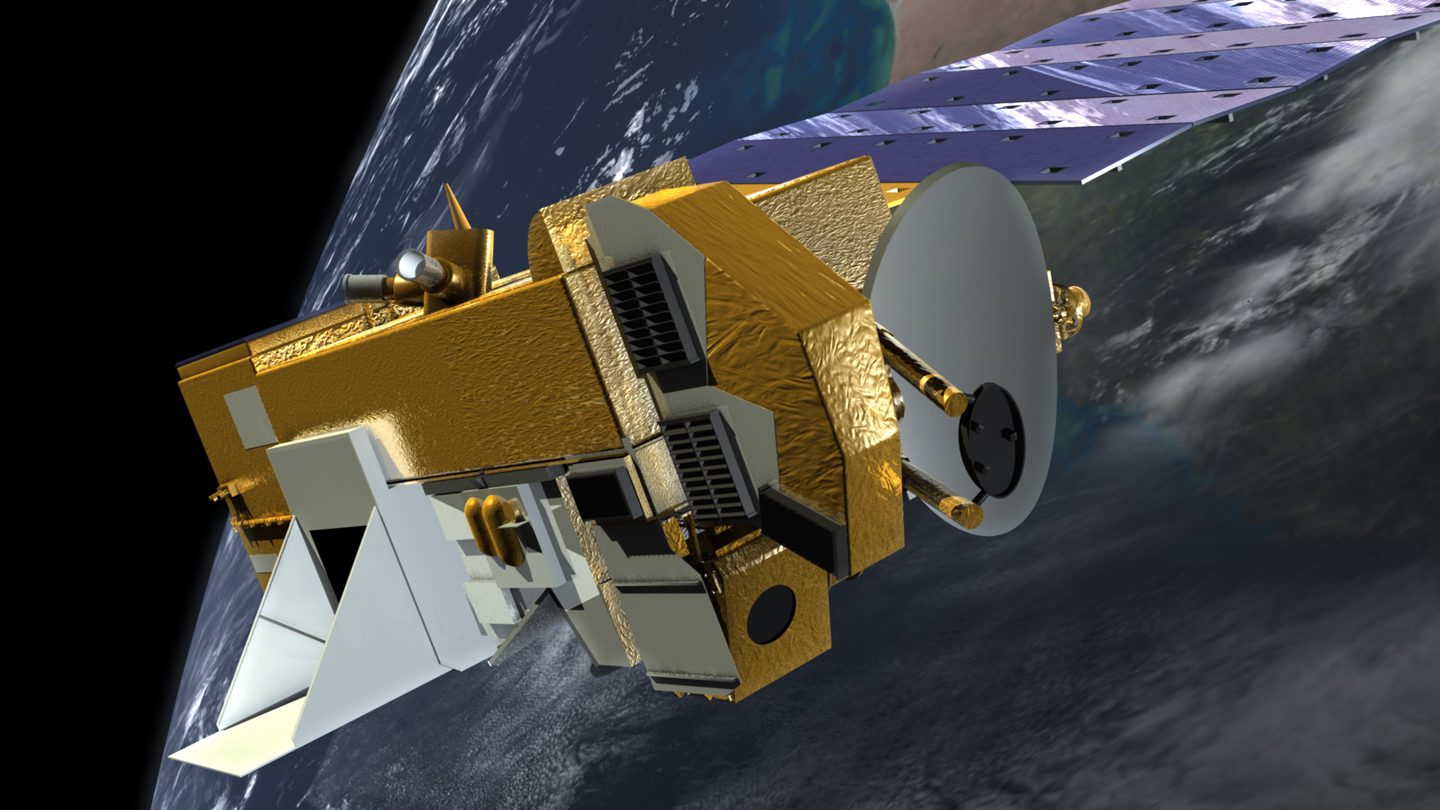
Aura (Latin for breeze) obtains measurements of ozone, aerosols and key gases throughout the atmosphere using technologically innovative space instrumentation. Scientists use these data to gain revolutionary insights into the chemistry of our atmosphere.About Aura
Aura's launch video and visualization
View Launch Photo
The Aura spacecraft was successfully launched on July 15, 2004 aboard a Delta II 7920-10L, a two stage expendable rocket, from the Vandenberg Western Test Range. What is a Delta 7920-10L? The 7 refers to the Delta series, 9 is the number of solid motors, 2 is the type of second stage and 0 is the type of third stage, in this case none. Fairing is the covering that protects the Aura spacecraft during launch and its trip into orbit. 10L describes the fairing; in Aura's case the fairing is 10 ft, (3 m) in diameter and is 'stretched' approximately 3 ft. longer than the fairing on the 7920-10.
Aura was launched into a sun-synchronous, near polar (98.2 degree inclination) orbit. It orbits 705 km (438 miles) above the Earth with a sixteen-day repeat cycle and 233 revolutions per cycle. The ascending node is in daylight and crosses the equator at approximately 1:45 PM. The Aura spacecraft is flying in formation with other Earth observing satellites called the A-Train.
Aura's instruments measure trace gases in the atmosphere by detecting their unique spectral signatures. Microwave Limb Sounder (MLS) observes the faint microwave emissions from rotating and vibrating molecules. High Resolution Dynamics Limb Sounder (HIRDLS) and Tropospheric Emission Spectrometer (TES) observe the infrared thermal emissions also due to molecular vibrations and rotations. Ozone Monitoring Instrument (OMI) detects the molecular absorption of backscattered sunlight in the visible and ultraviolet wavelengths.
Aura's remote sensing geometry is shown on the left. Horizon viewing (limb) instruments (MLS, TES and HIRDLS slice through the atmosphere, profiling gases. Down-looking instruments (OMI and TES) stare at the Earth. Since MLS looks out the front of the spacecraft, it is the first to profile the atmosphere. The OMI and TES instruments then look at the same air mass as it passes beneath the spacecraft. As the spacecraft then moves on in its orbit, HIRDLS and TES profile the atmosphere again.
This unique observing geometry allows the Aura instruments to combine their measurements to get a better picture of the atmospheric chemistry. The chart below shows all the chemicals measured by Aura instruments and the altitude range of those measurements.

Aura flies in formation about 15 minutes behind Aqua in the "A-Train" satellite constellation which consists of several satellites flying in close proximity. Each individual mission has its own science objectives; all will improve our understanding of aspects of the Earth's climate. The synergism that is expected to be gained by flying in close proximity to each other should enable the overall science results of the Afternoon Constellation to be greater than the sum of the science of each individual mission.
Data taken by the satellite instruments are stored on board until broadcast to a downlink facility through the spacecraft's high speed data link. Because polar orbiting satellites frequently pass over the Arctic and Antarctic, the data downlink facilities are located at high latitudes. NASA's major downlink facilities are Poker Flat, Alaska, McMurdo Base, Antarctica and Svalbard, a Norwegian archipelago in the Arctic Ocean north of mainland Europe. The Svalbard downlink antenna domes are shown below. Once the data are received at the downlink facility, they are sent via optical fiber network to processing facilities at NASA's Goddard Space Flight Center. The raw data are then distributed to the instrument teams for processing into geophysical measurements. Processed data are sent to NASA Data Active Archive Centers, where they are made available to users.
The Aura satellite also has direct broadcast capability through a smaller downlink antenna. This capability allows an investigator to receive data nearly instantly. The small building with the dome (on the upper right) is the Finnish direct broadcast station that receives OMI data as the satellite passes overhead. The direct broadcast data are processed at the Finnish Meteorological Institude FMI and distributed shortly after the Aura overpass.